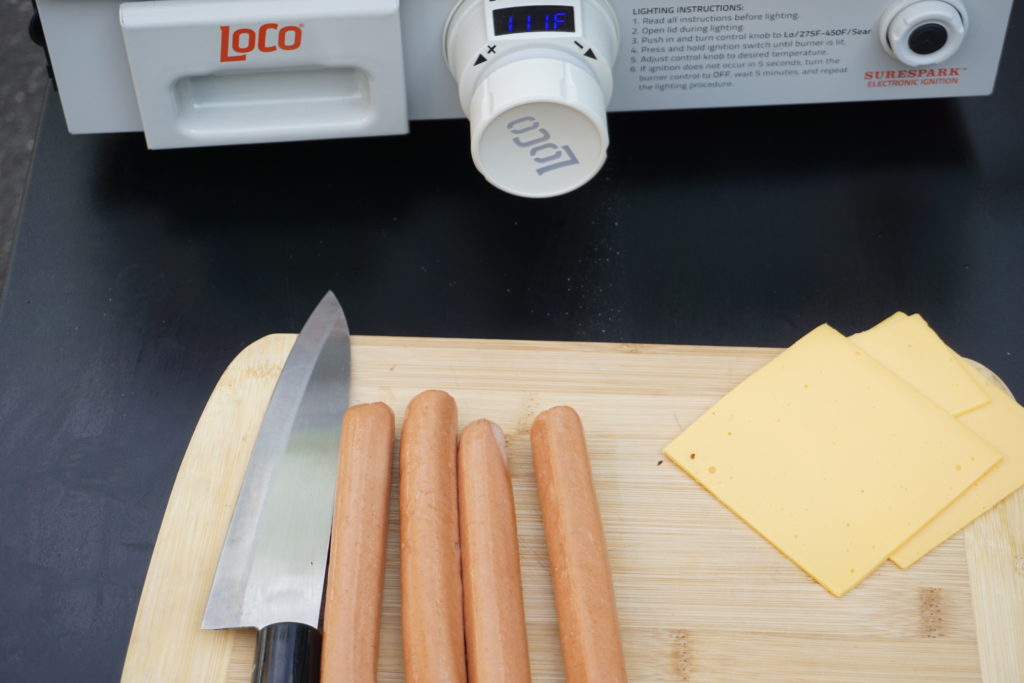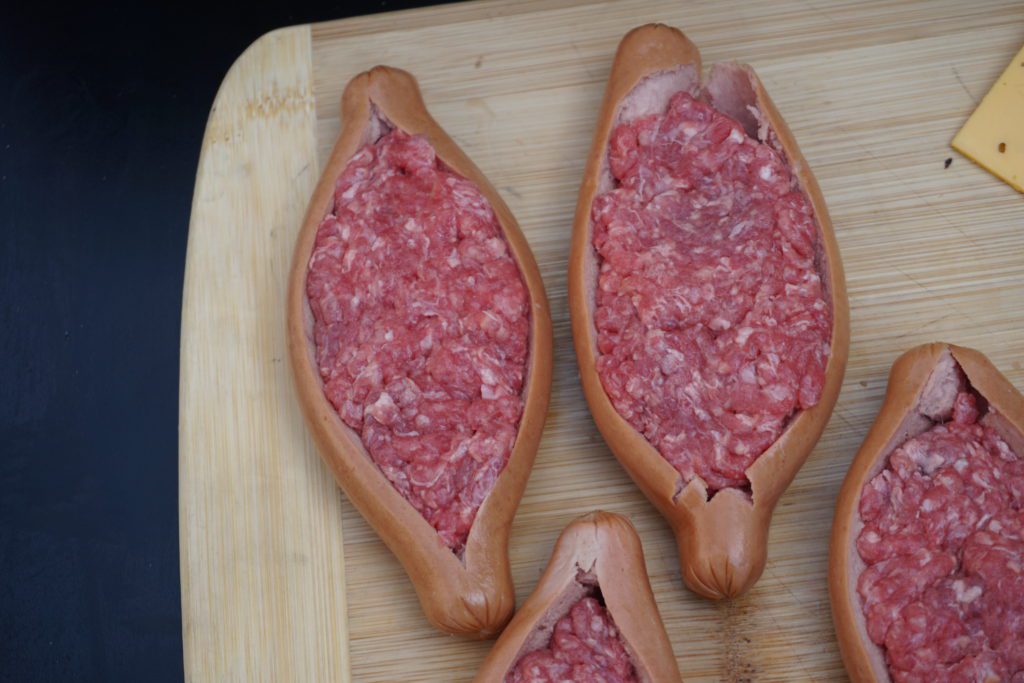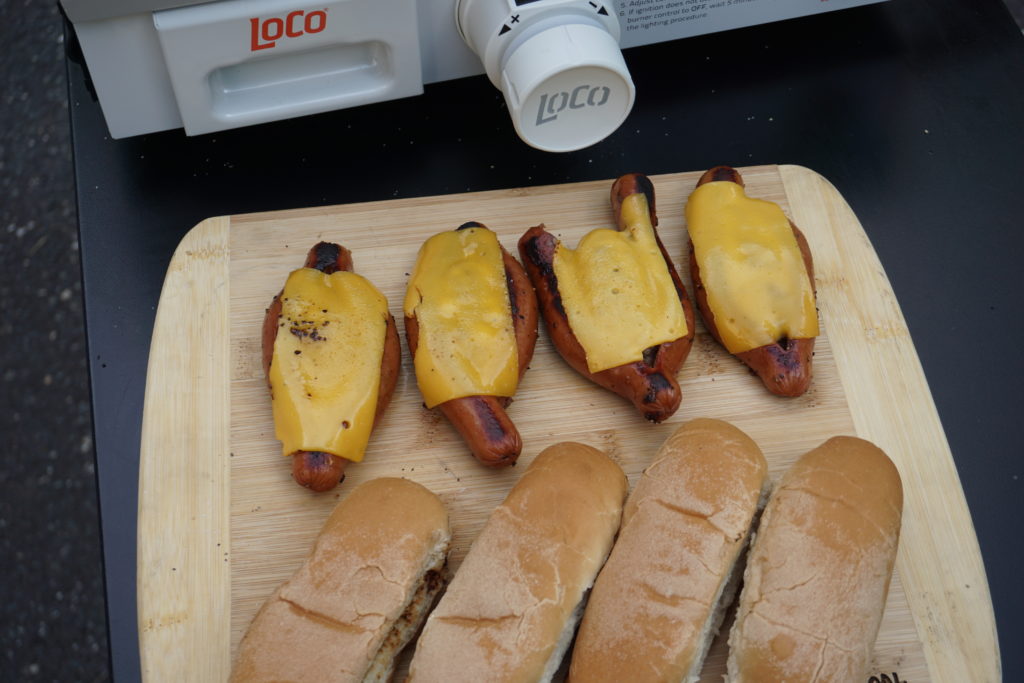Hotdogs are called glizzys because they are made of beef, pork, and veal.
In the late 1800s, German immigrants living in New York City would often have a dish of fried sausage. The dish was called a “frankfurter” or “wiener”.
The frankfurters were boiled in water to give them a hot dog shape and then they were served on buns with chili sauce and onions.











Stuffed Glizzys
Ingredients
- 4 hotdogs Hotdogs
- 4 buns Hotdog Buns
- ¼ tbsp Salt
- ¼ tbsp Pepper
- ½ pound Ground Beef
- Ketchup, Mustard, Relish
- Pickles
- Lettuce
- American Cheese
Instructions
This super easy stuffed hotdog recipe will take your glizzys to the next level
- Start by slicing a hole in your hotdogs length wise
- Stuffed each dog with ground beef or pork
- Season with salt and pepper
- Throw on the grill until ground beef is fully cooked. Around 10 minutes total
- Flip over around the 5 minute mark and add some cheese
- Close the lid of your griddle for 2 minutes or until cheese it fully melted
- Toast your buns
- Assemble your dogs by adding lettuce, hotdog, pickles and top with your favorite condiment
- Enjoy 🙂


dynamic balancing machines
Dynamic Balancing Machines: A Comprehensive Overview
Dynamic balancing machines play a crucial role in the maintenance and functioning of various rotor systems across multiple industries. They are designed to eliminate both static and dynamic imbalances found in rotors, which, if left unchecked, can lead to excessive wear and tear, operational inefficiencies, and safety hazards in machinery. This article explores the types, design features, and applications of dynamic balancing machines to provide a thorough understanding for potential users and manufacturers.
Understanding Dynamic Balancing Machines
A dynamic balancing machine is an advanced technological device specifically engineered to rectify unbalances in rotating components like fans, turbines, and various types of rotors. By accelerating the rotor to a predetermined rotational frequency, the machine utilizes specialized measuring systems to identify the imbalance’s characteristics, allowing for informed decisions regarding the placement of corrective weights. The precise construction of these machines generally comprises a sturdy bedframe, with support posts installed to hold the rotor, and drives to facilitate the rotation.
Types of Dynamic Balancing Machines
Dynamic balancing machines can primarily be categorized into two types based on their support design: Soft Bearing Machines and Hard Bearing Machines.
Soft Bearing Machines
Soft Bearing Machines utilize flexible supports typically constructed of spring suspensions. This design feature ensures that the natural frequency of these supports is significantly lower—often 2-3 times less—than the operational frequency of the balanced rotor. The flexibility in support allows for effective balancing across a wide range of rotational frequencies, beginning from as low as 200 RPM.
A prime example of this design is found in various specialized applications, where Soft Bearing Machines are employed for balancing tools, drive shafts, turbochargers, and more. The simplicity and effectiveness of these machines have gained popularity among small-scale manufacturers and DIY enthusiasts, enabling cost-effective balancing solutions.
Hard Bearing Machines
Unlike Soft Bearing Machines, Hard Bearing Machines are engineered with rigid supports that feature intricate designs, which significantly increase their versatility. These machines can deliver high-quality balancing across a broader range of rotor sizes and weights. Additionally, they excel in providing precise balancing at lower rotational speeds, typically ranging from 200 to 500 RPM.
Such machines are integral in environments demanding stringent balancing procedures, often measuring the relative deformations caused by unbalanced rotors through various sensors. This capability allows for enhanced accuracy that meets several industry standards.
Key Elements of Dynamic Balancing Machines
The construction and functionality of dynamic balancing machines hinge on several critical components:
Support Structures: Depending on the machine type, support structures are designed for optimal flexibility or rigidity, influencing the machine’s balancing capabilities.
Drive Systems: These are responsible for rotating the rotors at specified speeds, crucial for accurate dynamic balancing.
Measuring Systems: Utilizing vibration sensors and phase angle sensors, these systems capture data regarding the rotor’s performance and imbalance characteristics.
Corrective Weights: These weights are crucial in rectifying any identified imbalances during the balancing process.
Construction and Design Considerations
When creating or implementing dynamic balancing machines, particularly for in-house production, specific design considerations should be accounted for:
Material Selection: Choose materials that provide the necessary strength and durability to withstand operational stresses.
Precision Engineering: Ensure that all components are manufactured with precision to avoid discrepancies in balancing.
Ease of Use: The design should facilitate straightforward operation and maintenance, which is vital for optimal productivity.
Benefits of Using Dynamic Balancing Machines
Implementing dynamic balancing machines provides several advantages:
Extended Equipment Life: Reducing imbalance mitigates premature wear of rotating components, which extends their service life.
Enhanced Operational Efficiency: Well-balanced rotors lead to smoother operations, translating into lower energy consumption and improved performance.
Increased Safety: Effective balancing reduces vibrations that can lead to serious operational failures and safety risks.
Cost-Effectiveness: DIY options and in-house production of balancing machines can significantly reduce costs for small manufacturers.
Applications of Dynamic Balancing Machines
The versatility of dynamic balancing machines allows them to be applied across various sectors, including:
Aerospace: Rotor balancing is vital for aircraft engines and turbines to ensure performance and safety.
Automotive: Used for balancing crankshafts, flywheels, and other critical engine components.
Manufacturing: Essential for maintaining the efficiency of rotating tools such as lathes and milling machines.
HVAC Systems: Fans and blowers must be appropriately balanced to ensure airflow efficiency and reduce noise during operation.
Conclusion
Dynamic balancing machines are indispensable tools for industries reliant on rotating machinery. Understanding their types, applications, and operational benefits can guide organizations toward optimizing production processes while enhancing safety and efficiency. By leveraging both established and DIY approaches to dynamic balancing machines, companies can improve the reliability and effectiveness of their operations, ultimately leading to better products and services in various sectors.
Your article helped me a lot, is there any more related content? Thanks!